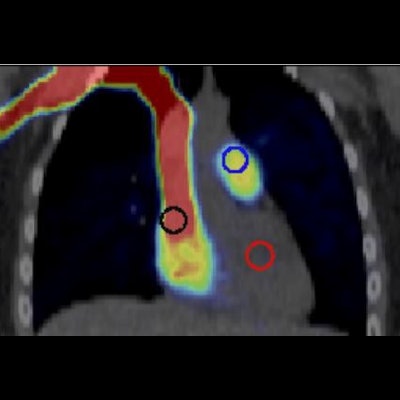
Researchers have performed the first PET imaging study in electronic cigarette (e-cigarette) users, and the findings point to a unique inflammatory response due to vaping, they suggest.
A team at the University of Pennsylvania identified differences in PET imaging among groups of e-cigarette users, smokers, and participants who never smoked or vaped. Significantly, the PET findings in e-cigarette users were different than in smokers, they found.
"We found preliminary evidence [e-cigarette] users had greater pulmonary inflammation than cigarette smokers and never smoke/vape controls, with a positive association between pulmonary and peripheral measures of inflammation," wrote first author Dr. Reagan Wetherill, PhD. The study was published online January 19 in the Journal of Nuclear Medicine.
E-cigarette use has increased dramatically, particularly among adolescents and young adults. The increase in use is partially driven by the assumption that e-cigarettes are safer than conventional cigarettes, according to the authors.
As with smoking, however, several electronic cigarette-related compounds are associated with inflammation, altered innate immune response, oxidative stress, and cytotoxicity. To date, most studies on the pulmonary effects of e-cigarettes have used invasive tools such as bronchoscopies that do not adequately assess the impact of vaping on the lungs, the authors wrote.
"This is the first PET imaging study to compare lung inflammation between electronic cigarette and cigarette users in vivo," they wrote.
The researchers recruited 15 community participants and divided them into three age- and sex-matched groups: five e-cigarette users, five cigarette smokers, and five participants who never smoked or vaped. E-cigarette users had vaped nicotine, and cigarette smokers had smoked daily for six months prior to the study.
 Representative fused coronal PET/CT images after injecting 207 MBq F-18 NOS with 2-cm diameter spherical blood pool search volumes of interest in the right atrium (black), pulmonary artery (blue), and left ventricle (red), with (A) PET-summed uptake 0-15 seconds post injection and (B) PET-summed 37 to 42 seconds post injection with lung volume of interest (cyan). Image and caption courtesy of the Journal of Nuclear Medicine through CC BY 4.0.
Representative fused coronal PET/CT images after injecting 207 MBq F-18 NOS with 2-cm diameter spherical blood pool search volumes of interest in the right atrium (black), pulmonary artery (blue), and left ventricle (red), with (A) PET-summed uptake 0-15 seconds post injection and (B) PET-summed 37 to 42 seconds post injection with lung volume of interest (cyan). Image and caption courtesy of the Journal of Nuclear Medicine through CC BY 4.0.Participants underwent PET imaging with a radiotracer (F-18 NOS) that binds to a nitric oxide enzyme (iNOS) in pulmonary tissue. iNOS is a PET biomarker associated in prior studies with acute and chronic inflammatory diseases. A blood sample was also obtained to measure cytokine concentrations.
On the PET images, e-cigarette users showed greater binding activity between the tracer and iNOS than cigarette smokers (p = 0.03) and never smoked/vaped controls (p = 0.01), whereas binding in cigarette smokers did not differ from controls (p > 0.1), according to the results.
Moreover, F-18 iNOS binding in the lung imaging correlated significantly with blood concentrations of tumor necrosis factor alpha (TNF-a) (Spearman's rank correlation = 0.87, p = 0.05) in e-cigarette users. TNF-a is a potent inflammatory cytokine that responds to injured lung tissue.
"We find evidence that [e-cigarette] use causes a unique inflammatory response in the lungs, reflected by PET measures of iNOS expression and correlations with inflammatory biomarker concentrations," the authors wrote.
This was a pilot study and ultimately addresses a gap in the medical literature by using a noninvasive PET method to study the effects of e-cigarette use on the human lung, the authors noted.
"Future work is needed to elucidate the effect of [e-cigarette] use on respiratory health, especially the effects of chronic [e-cigarette] use," Wetherill and colleagues concluded.





















